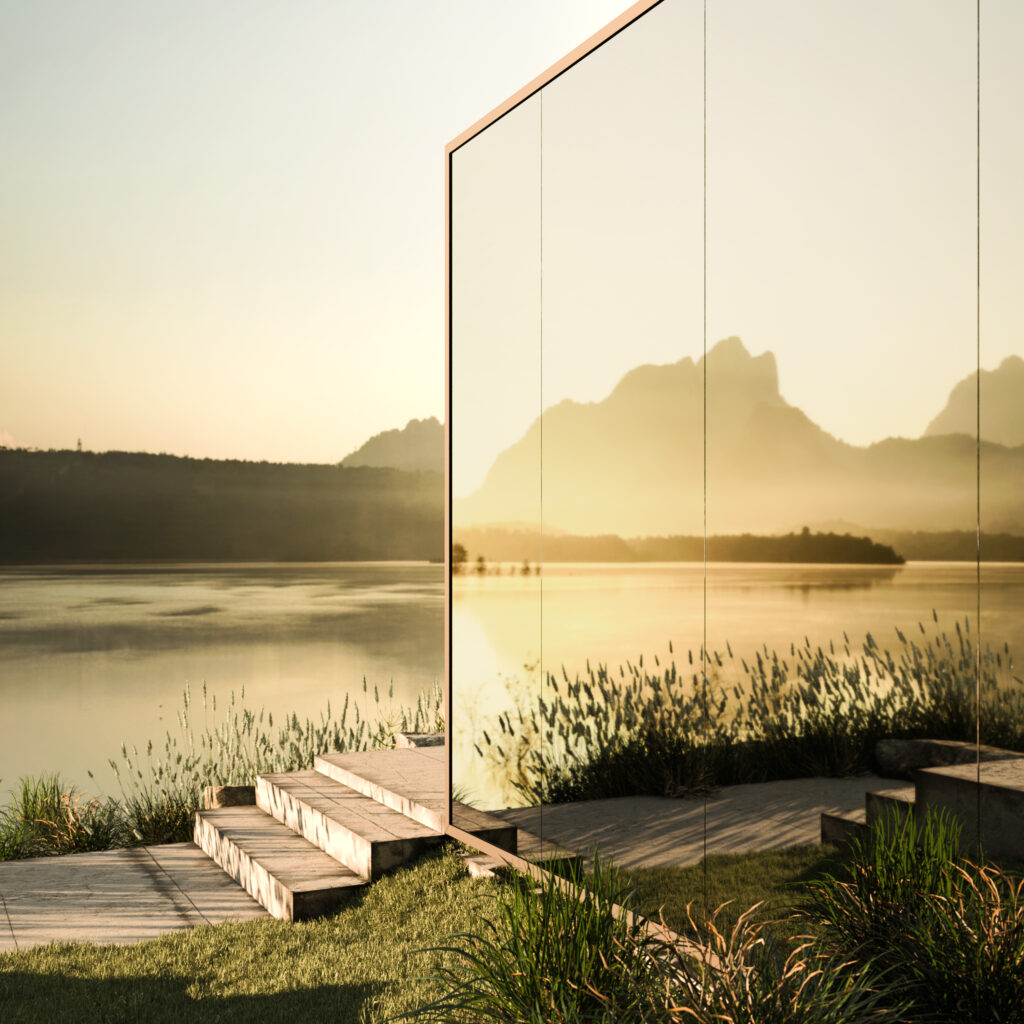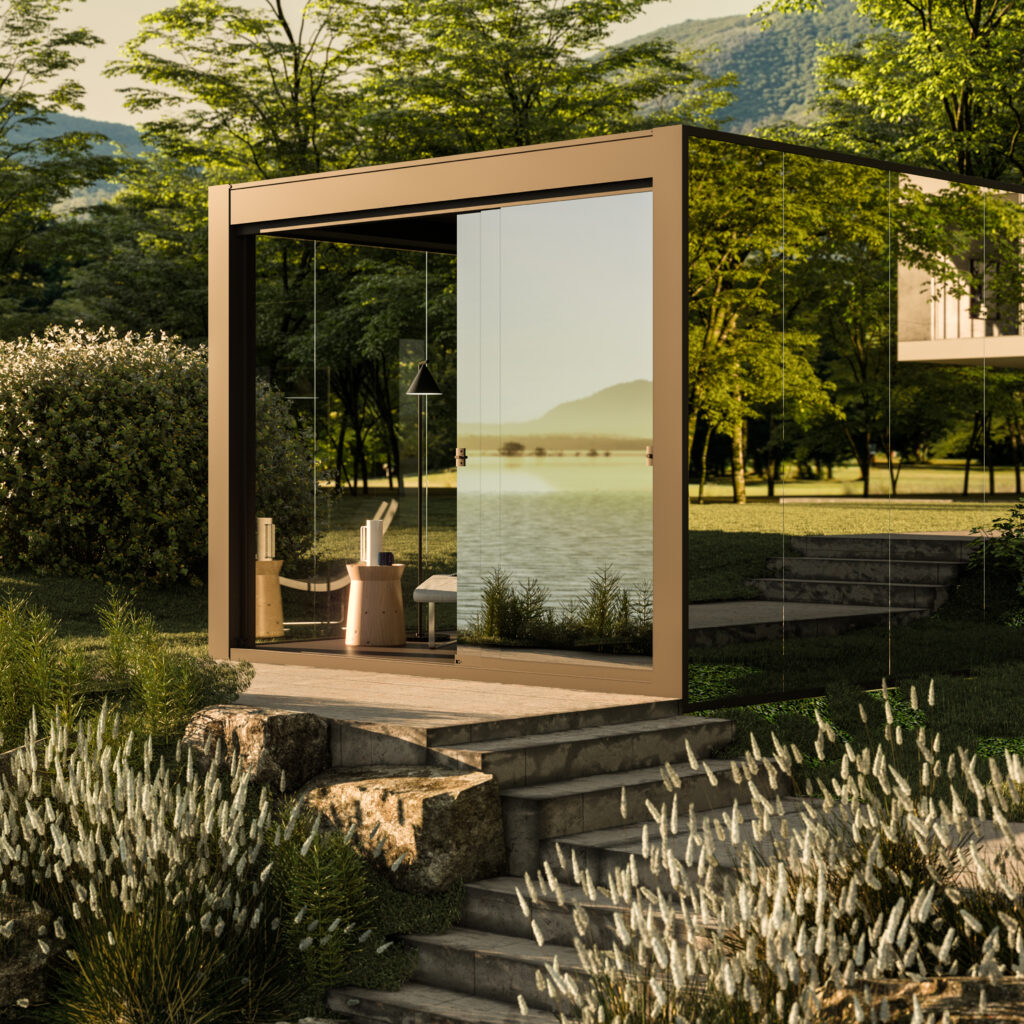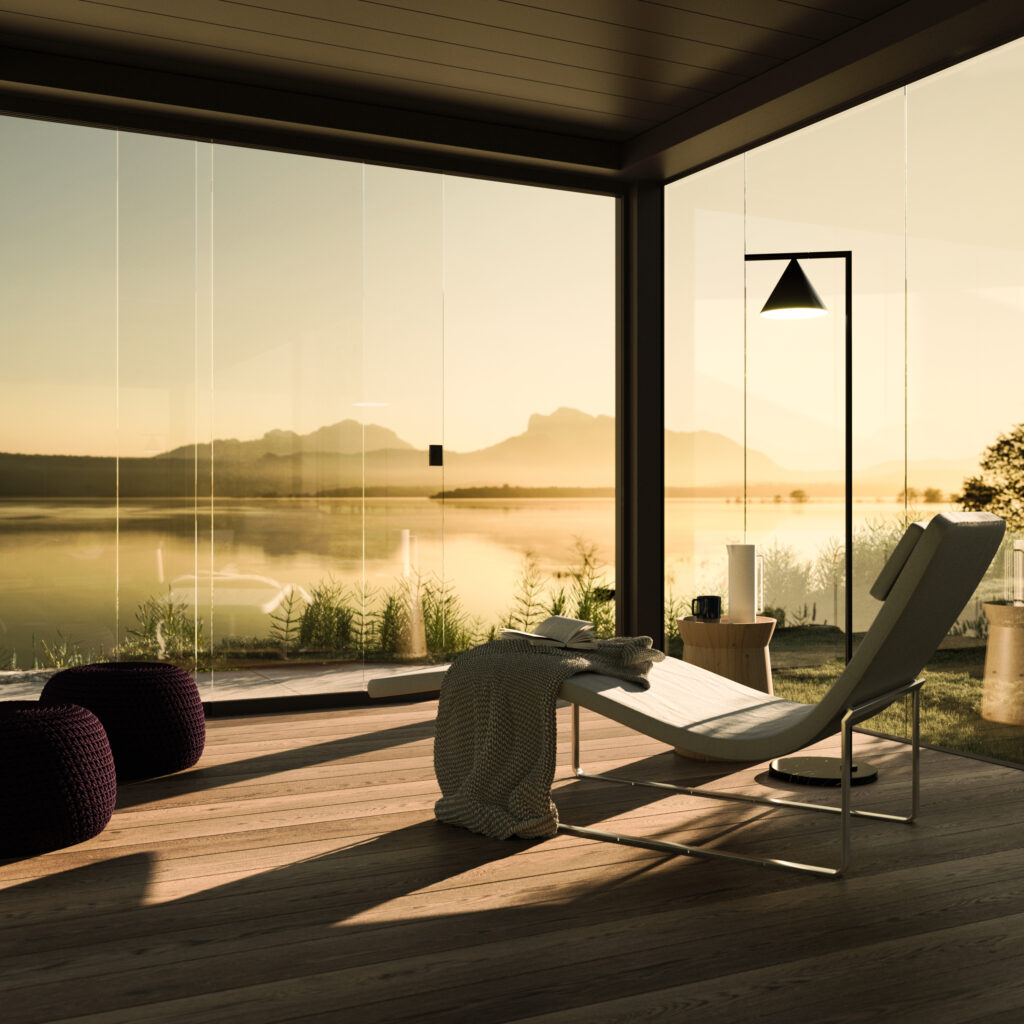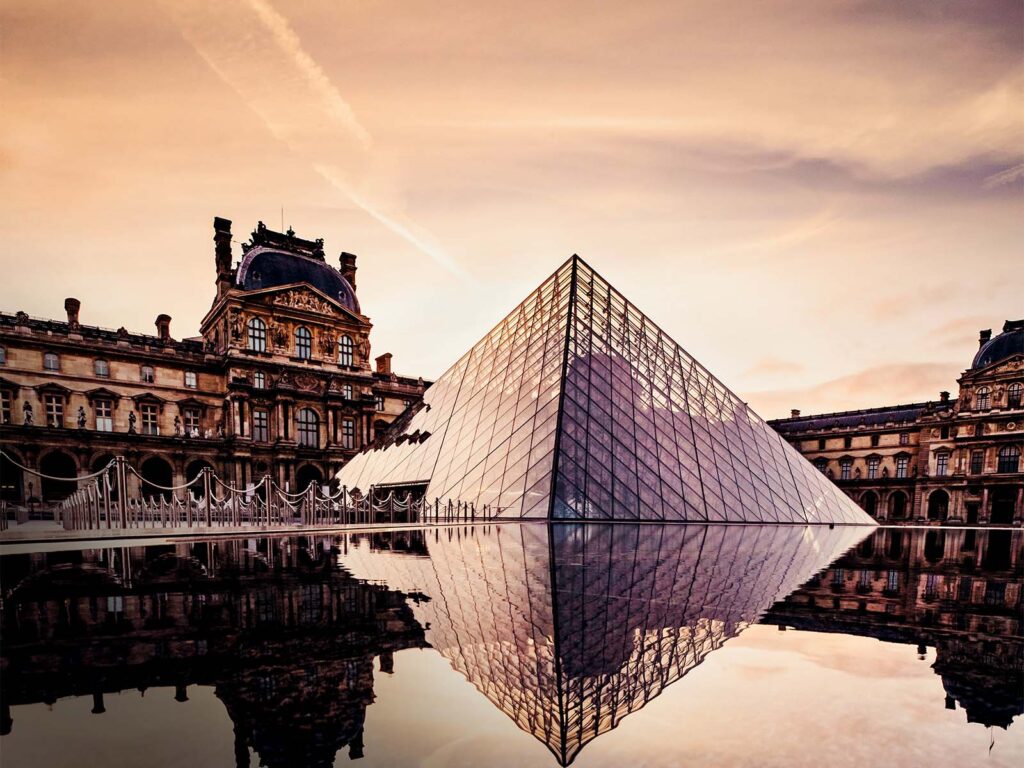Looking into the future
The transparency of glass uncovers the secret of the success of one of the main design materials, which is still recycled to revolutionise certain features to this day along with original architecture, and the relationship between humans and nature.
A promise of light, protection, sustainability, and also the innate desire of people to dominate the surrounding environment with their own eyes.
Living with a 360° view of the landscape has always represented a great deal more than a trend or an aesthetic preference, including making an innate choice of well-being.
The architect Pierre Koening built a particular house among the hills of Los Angeles in the 1950s, the characteristics of which were open planned and the use of glass walls around the entire perimeter, which constructed the Stahl House (or Case Study House #22) formed a genuine cube, which was projected on the skyline of the Californian city. The home’s innovation made it famous in the world of architecture and beyond: it was chosen as a venue for films and television dramas, and it include the idea of a new type of luxury, freedom and protection.
Ludwig Mies van der Rohe had presented his iconic Farnsworth House just a few years earlier in Illinois in 1951, which is a further example of architecture communicating with the landscape in which indoor and outdoor areas merged through fluid spaces and the extensive use of panoramic windows.It is no coincidence that the idea of the glass cube has retained its charm for over seventy years, and has inspired the creations from top international architects and continues to evolve under new formats and perspectives.

Light passes through, heat does not
A renewable material par excellence, this glass boasts possesses an exceptional quality of being able to be recycled one hundred percent and for an unlimited number of times. Despite this unparalleled gift, people still ask themselves nowadays whether the use of glass in architecture, and in particular for large skyscrapers, can actually be of any real benefit or whether it contributes towards indoor environments becoming overheated with a subsequent increase inconsumption it terms of air conditioning.
Glass has in all fairness been the protagonist of an important technological evolution that has made it possible to create walls designed specifically to ensure transparency and prevent heat from entering. These are selective or low-emissivity solar control glasses that allow light radiation to be transmitted, and which reject infrared radiation, particular those of a thermal nature with a lower wavelength. The same principle also inspires innovation from smart windows, which modify their transparency levels based on changes in the weather and infrared rays thanks to layers consisting of materials with optoelectric properties, and which are based on combined electronic and light reactivity.
Light, renewable and resistant, the raw material of glass offers many advantages from a technical point of view, which are further multiplied if one takes into account the benefits given by the liveability of spaces.The feeling of wellbeing obtained by dominating an environment with one’s gaze is in fact due to an evolutionary component of human beings, essential for their survival. Protected places, yet open to view, are still able to stimulate calm and delight in us, electing glass as the central element for their achievement.
Not only that, the unquestionable allure of transparency, combined with the security of this material’s shielding, has enabled experiences on the edge of the impossible. Just think of the sensations given by the kaleidoscope windows of Antoni Gaudì’s Sagrada Familia in Barcelona; the incredible Sky Pool in London that allows you to swim suspended in the air between the two buildings of the Embassy Gardens; or the panoramic lifts of the New York skyscrapers and the new crystal flooring of the Eiffel Tower.
It is precisely this preference for transparency that has led to innovation in the use of glass, through original solutions that have as their main protagonist the interaction between outdoor and indoor and the repositioning of the individual at the centre of the natural context.
In particular, the outdoor roofing sector has embraced this demand by shielding pergolas and verandas with panoramic glass windows, which extend the liveability and usability of outdoor spaces. But innovation has gone much further: the outdoor sector has revolutionised the relationship between man and nature by exploiting the very concept of the glass cube, which for the first time becomes ‘mirrored’ and able to make the individual an active and integral part of the landscape.
A new dawn has begun. It is called Connect.
Living outdoors in an almost completely invisible structure which is designed to interact with the surrounding landscape. This sensational architecture is Connect, the Pratic pergola that rewrites the rules of open air life.
Its stand-out feature is the mirrored outer surface, which has never been experienced before in a pergola: reflective glass walls Spy Glass, which live reproduce shapes, colours and movements of the natural or urban landscapes. From the inside, instead, Connect offers a perfect view of the landscape, while to an outside eye bioclimatic spaces are inaccessible, thus allowing to envisage original and versatile uses.
A total mimesis with the surroundings which is also realised through the aluminium blade covering, which can be adjusted to obtain maximum ventilation, temperature and lighting conditions. Their adjustment, as well as that of drop down awnings and Led lights, can also be managed using an app or sending a voice command to the Amazon Alexa and Google Home systems, however this can also be done using specific sensors designed to respond autonomously to any changes in weather conditions. A further development of the pergola towards becoming hi-tech, which simplifies the creation of your own personal comfort settings.

Glass Series: life in a panoramic mode
Pratic has created a new and complete range of panoramic glass walls that allow you to screen the perimeter of the pergola, without any visual or architectural impact.They are made of clear, mirrored, smoked or frosted tempered glass, and are available in three variants: sliding (Slide Glass 60), fixed (Fix Glass) and come with hinged door (Door Glass), all of which are part of refined, minimal and seamless design without visible components. Glass Series windows offer protection against water infiltration, wear and tear, saline fog and wind: performance levels do vary according to the product and are guaranteed by the CE certification issued by the Giordano Institute.

Glass in the shape of an icon
Geometric glass architectures have become icons that still inspire new and futuristic projects even as of today. One of the most common recurring themes is represented by the pyramid of the Louvre museum in Paris, which was designed by Ieoh Ming Pei in 1989. It is a structure which has been the subject of much controversy precisely because of its design, defined as “too modern”, but which soon became an iconic Parisian landmark capable of illuminating the large entrance of the museum with shrewd lighting.
Much more recent are the glass spheres inaugurated in Seattle in 2018 to host the new Amazon headquarters: an oasis of work with more over 40,000 plants from the rainforests from over thirty different countries, which were chosen because they could promote a comfortable and beneficial environment for human beings.
